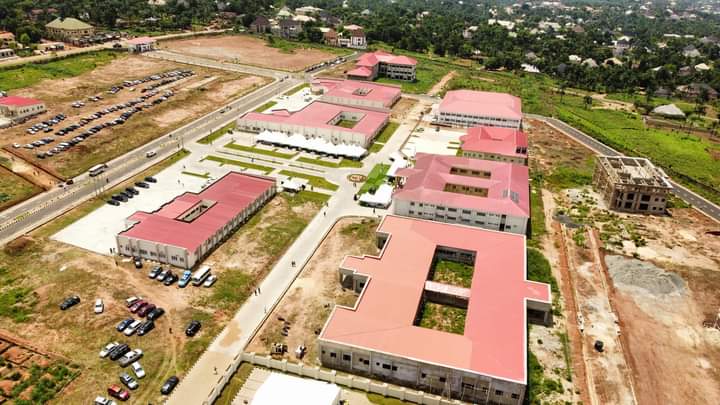
NAUTH new site
From a modest beginning, the Nnamdi Azikiwe University Teaching Hospital (NAUTH), Nnewi, Anambra State, is gradually cementing its place as a continental force in medical care, as work progresses steadily on its permanent site.
Located on a sprawling expanse in the heart of Nnewi, the permanent site is rapidly transforming into a modern medical city, one that experts and observers say could redefine the future of tertiary healthcare in Nigeria and West Africa.
Speaking during a recent tour of the facility, stakeholders described the ongoing development as a shining example of what is possible in Nigeria when purposeful leadership, institutional commitment, and community trust align.
“Ultimately, the NAUTH permanent site is a symbol of what is possible in Nigeria when vision meets execution. It is a living testament to what institutional leadership, strategic planning, and community trust can build,” a senior hospital official stated.
Designed to host over 5,000 beds on completion, the hospital is already attracting attention from within and outside the country for its scale and ambition. While several departments have relocated to the permanent site, the phased construction continues with a focus on world-class facilities, modern medical equipment, and a patient-centric environment.
The Chief Medical Director of NAUTH, Prof. Joseph Ugboaja, who has been at the forefront of the transformation, said the project represents more than just physical infrastructure. According to him, it reflects a long-term commitment to delivering quality healthcare, driving medical research, and training future generations of healthcare professionals.
“Our vision is to make NAUTH the best in Nigeria and one of the leading medical centres in Africa,” Prof. Ugboaja said. “We are not just building structures; we are building a legacy of excellence.”
Already, the hospital has made significant progress. A multi-storey accident and emergency centre, renal centre, oncology department, and administrative blocks are either completed or nearing completion. The ongoing construction of a state-of-the-art diagnostic centre, a research facility, and staff quarters further underscores the hospital’s strategic growth plan.
Community leaders, health professionals, and policymakers have all lauded the strides made at NAUTH. Some described it as “a national treasure in the making.”
“As it scales toward its 5,000-bed goal, NAUTH is not just expanding; it is evolving into a continental powerhouse, a landmark in African healthcare, and a source of national pride,” another official noted.
Many have also praised the collaborative efforts between the federal government, the hospital management, and the host community in sustaining the momentum.
Beyond infrastructure, NAUTH has recently stepped up its recruitment of top medical talent, introduced cutting-edge treatment protocols, and strengthened its medical residency programmes—earning recognition from health accreditation bodies.
The impact is already being felt, with patient referrals rising significantly, especially from states in the Southeast and South-South regions, and even from neighbouring West African countries.
Analysts say that if the current pace is maintained, NAUTH could soon rival some of the best teaching hospitals across the continent.
“The future of medicine in Nigeria—and perhaps, a good part of Africa—is being shaped quietly but confidently in Nnewi, and the world is beginning to take notice,” the source added.
As it stands, NAUTH’s story is one of hope, resilience, and transformation. In a time when many public health institutions in Nigeria are struggling, the hospital’s journey offers a compelling model of what is achievable with clear vision, institutional integrity, and the will to deliver lasting impact.